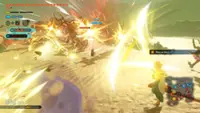View towards Negros Island, Philippines, in the Sulu Sea. The Sulu and Celebes Seas are part of the Coral Triangle, the planet’s richest centre of marine life and coral diversity. — LEODB/Wikimedia Commons
THE nearest, southernmost Philippine island to Sabah is only 50km – or a 30-minute boat ride – from Tawau.
Panguan Island, a 6ha place of blindingly white sand lapped by turquoise blue water that sits in the municipality of Tawi-Tawi, is one of the many hundreds of islands making up the Sulu Archipelago.





